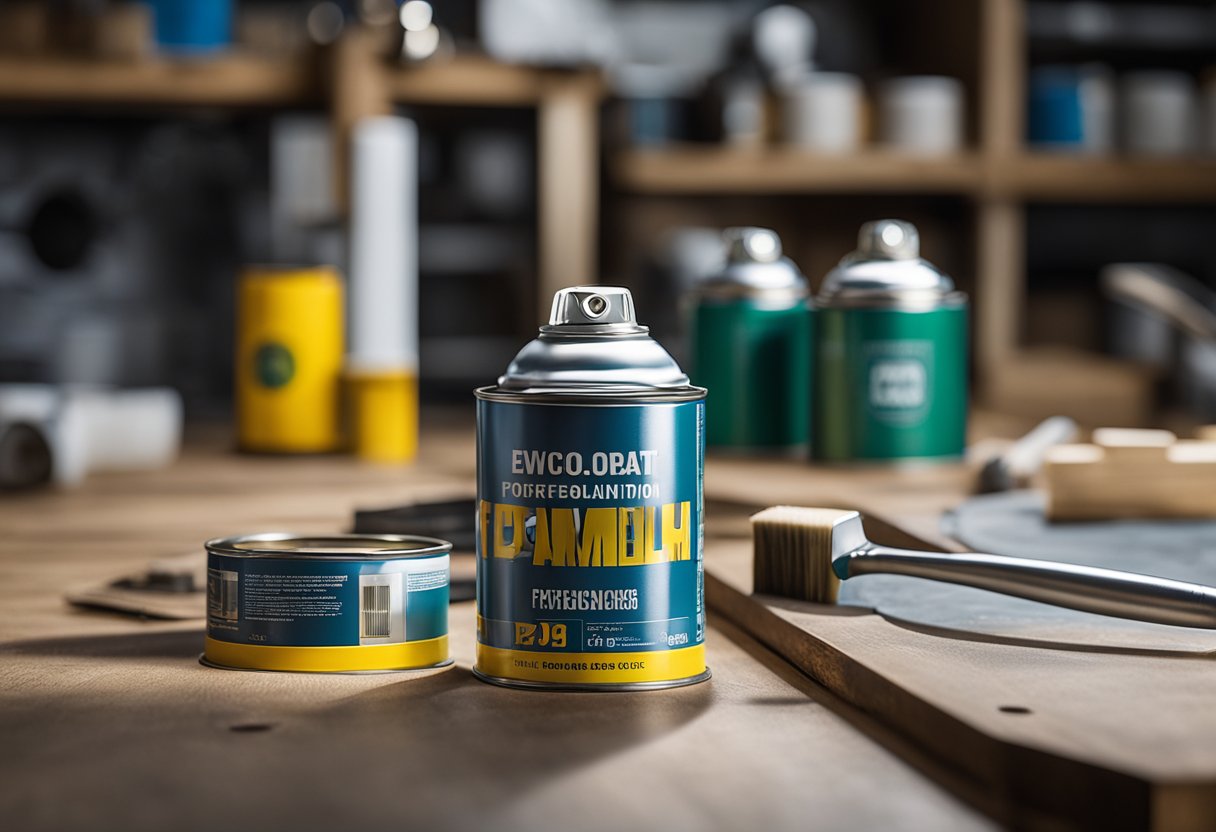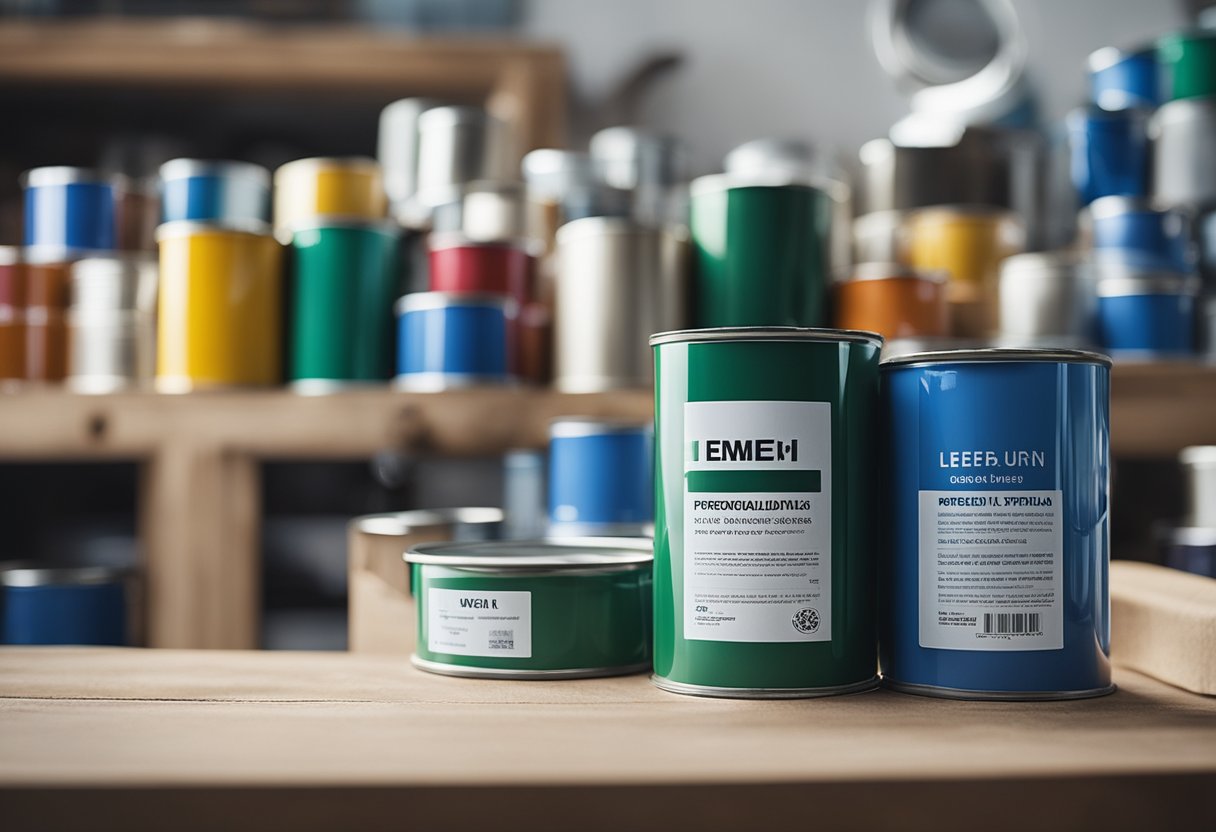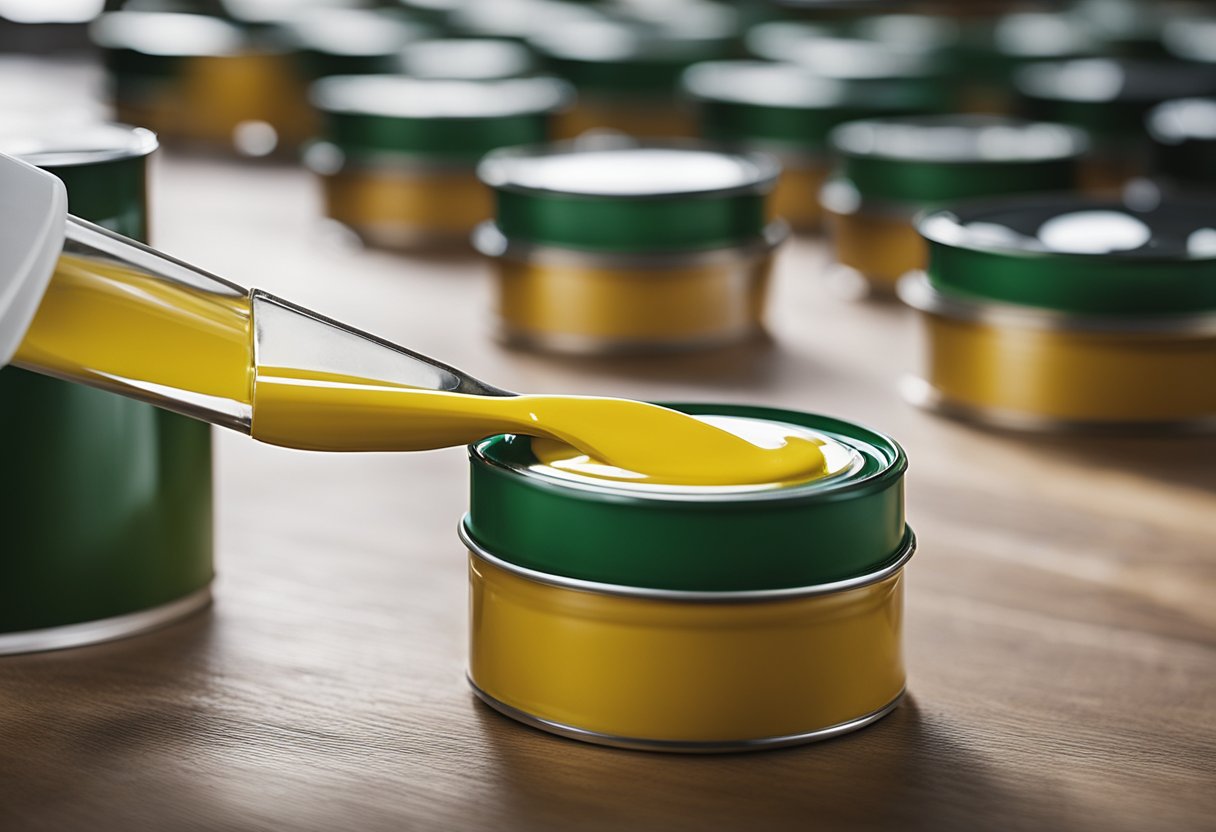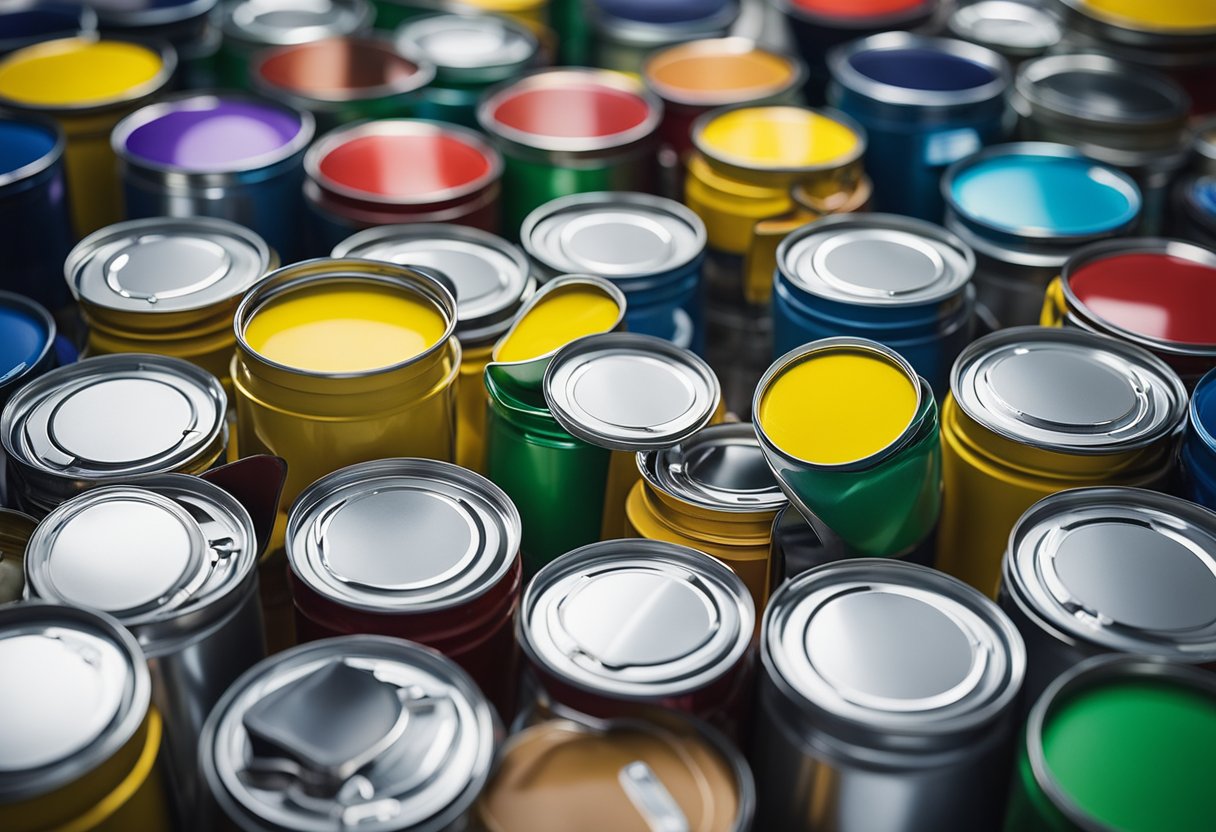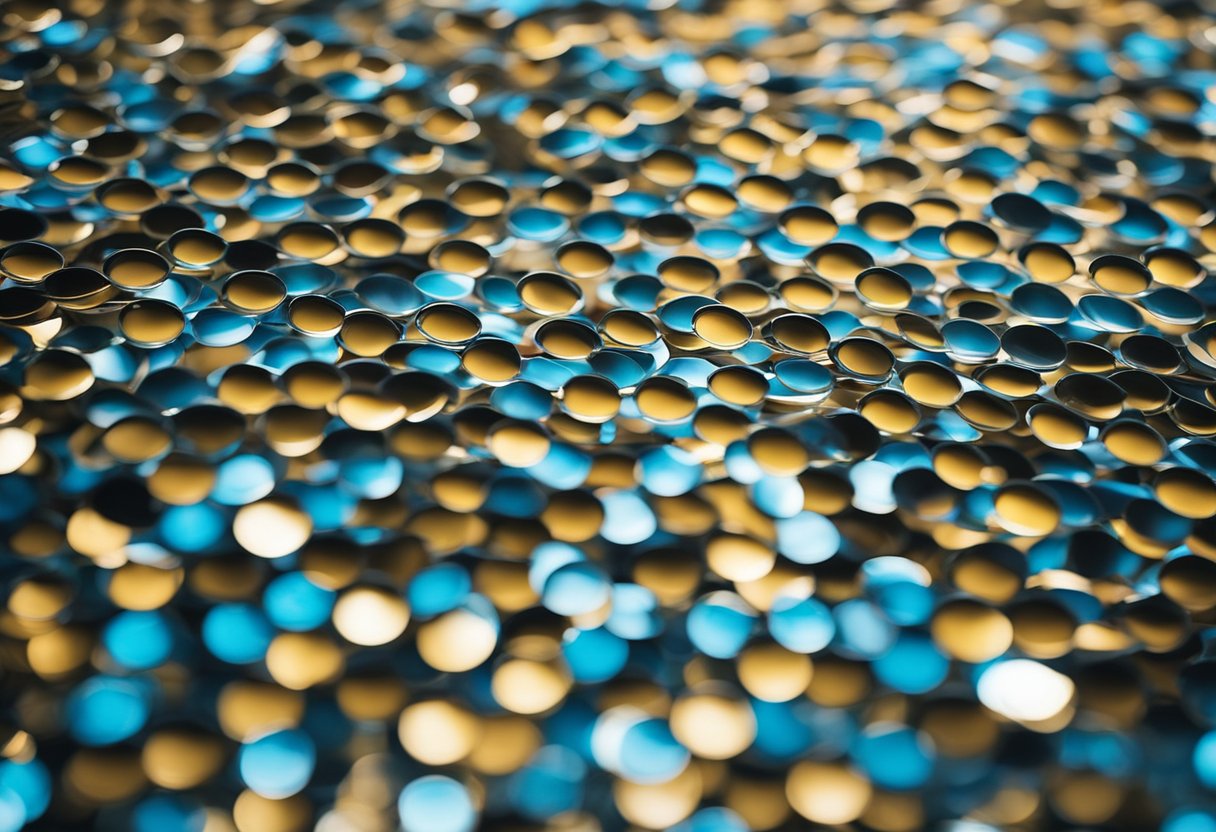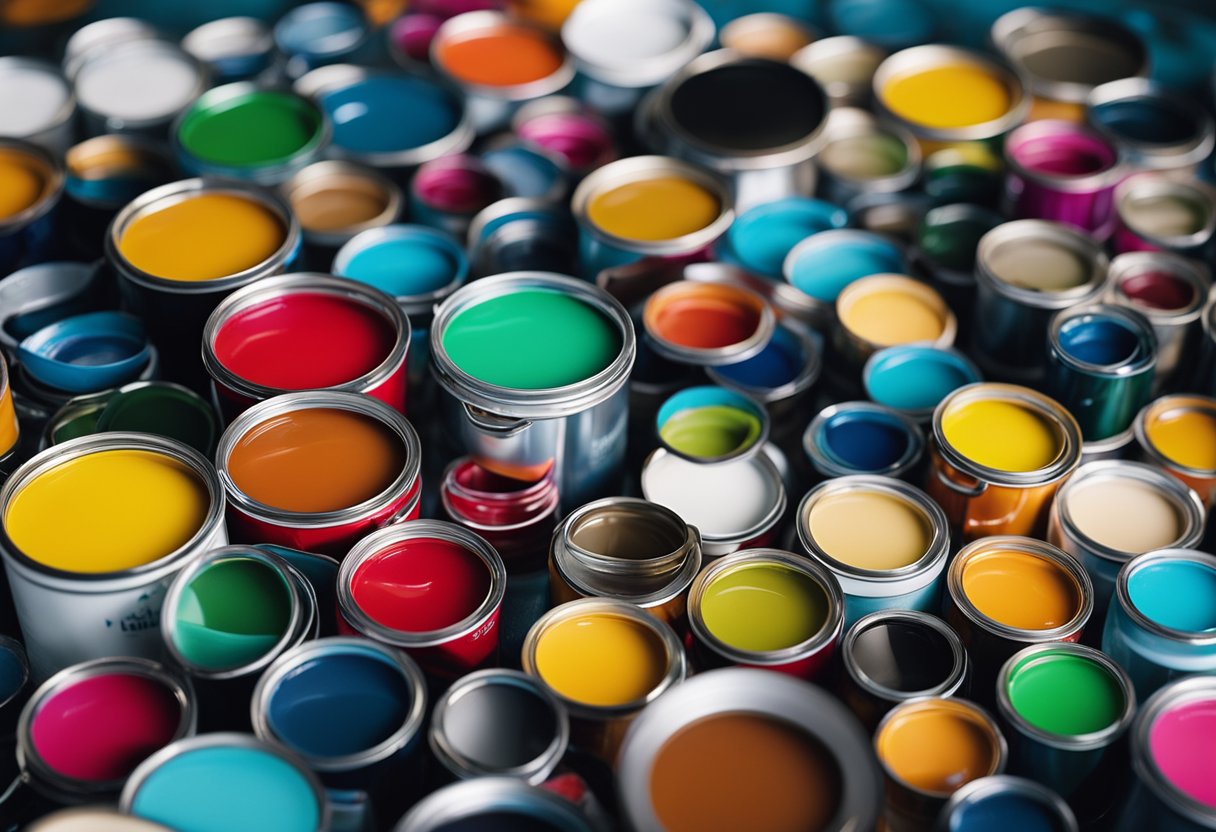As a DIY enthusiast or a professional painter, you may have wondered whether enamel paint needs a clear coat. Enamel paint is a popular choice for painting surfaces that require a durable and glossy finish. However, without proper care and maintenance, the paint can easily chip or fade, leaving the surface looking worn out. This is where clear coat comes in.
In this article, I will explore the role of clear coat in enhancing the durability and appearance of enamel paint. We will delve into the preparation and application of clear coat, the different materials used for clear coat, and the surfaces that require it. Additionally, we will discuss the cost and other considerations to keep in mind when deciding whether to use clear coat.
Key Takeaways
- Clear coat is essential for protecting enamel paint from chipping, fading, and other forms of damage.
- Proper preparation and application of clear coat are crucial for achieving optimal results.
- The choice of clear coat material and the surface being painted should be considered when deciding whether to use clear coat.
Understanding Enamel Paint
https://www.youtube.com/watch?v=FkH8BePKnBA&embed=true
As someone who has worked with enamel paint for a while, I can confidently say that it is a popular choice for a variety of applications. Enamel paint is a type of paint that dries to a hard and glossy finish, making it ideal for use on surfaces that require a durable and long-lasting coating.
Enamel paint is available in a range of formulations, including oil-based enamel and acrylic enamel. Oil-based enamel is known for its durability and resistance to chipping and peeling, making it ideal for use on metal surfaces. Acrylic enamel, on the other hand, is water-based and dries to a hard and glossy finish that is ideal for use on surfaces such as wood and concrete.
One of the advantages of enamel paint is that it does not require a clear coat to protect it. This is because enamel paint is designed to be durable and long-lasting, and is able to withstand exposure to the elements without the need for additional protection.
However, if you are using enamel automotive paint, it is recommended that you apply a clear coat to protect the paint from damage caused by UV rays, chemicals, and other environmental factors. Enamel automotive paint is specifically formulated to be used on cars and other vehicles, and as such, it is important to follow the manufacturer’s recommendations when it comes to applying a clear coat.
In conclusion, enamel paint is a durable and long-lasting type of paint that is ideal for use on a variety of surfaces. While it does not require a clear coat to protect it, it is important to follow the manufacturer’s recommendations when using enamel automotive paint to ensure that it is properly protected from damage.
The Role of Clear Coat
https://www.youtube.com/watch?v=WRa34QdvReg&embed=true
As an experienced painter, I can confidently say that clear coat is an essential element in protecting enamel paint. Clear coat is a transparent layer that is applied over the paint to provide a protective barrier against scratches, fading, UV rays, humidity, and other environmental factors. It is a durable and long-lasting solution that ensures the longevity of your paint job.
Clear coat is particularly important when it comes to enamel paint. Enamel paint is a popular choice for automotive and industrial applications due to its durability and resistance to wear and tear. However, it can be prone to fading and scratches over time, especially when exposed to harsh weather conditions. Applying clear coat over enamel paint provides an extra layer of protection that can help prevent these issues.
When it comes to clear coat over enamel paint, there are several options available. Rustoleum clear coat is a popular choice due to its compatibility with Rustoleum enamel paint, which is a common type of enamel used in automotive and industrial applications. Lacquer clear coat is another option that provides a high-gloss finish and is known for its durability.
Clear enamel is a type of paint that already contains a clear coat in its formula. It provides a glossy finish and is a popular choice for interior and exterior surfaces. However, it may not be as durable as a separate clear coat applied over enamel paint.
In conclusion, clear coat plays a crucial role in protecting enamel paint from fading, scratches, and other environmental factors. Whether you choose Rustoleum clear coat, lacquer clear coat, or clear enamel, applying a clear coat over enamel paint is a smart and necessary step to ensure the durability and longevity of your paint job.
Preparation and Application
https://www.youtube.com/watch?v=lsAPmDYXEqY&embed=true
When it comes to painting with enamel paint, proper preparation is key to achieving a smooth and durable finish. The first step is to ensure that the surface is clean and free of any dirt, dust, or debris. This can be done by wiping the surface down with a damp cloth or using a mild detergent to remove any stubborn stains.
Once the surface is clean, it’s important to apply a quality primer to ensure that the enamel paint adheres properly. A primer will also help to fill in any small imperfections in the surface, resulting in a smoother finish. It’s important to choose a primer that is compatible with the type of enamel paint being used.
When it comes to applying enamel paint, there are several options available. A paint brush can be used for small areas, while a spray gun or spray paint cans can be used for larger areas. Regardless of the method used, it’s important to apply two coats of enamel paint for the best results. Allow each coat to dry completely before applying the next.
After the enamel paint has dried, wet sanding can be used to remove any imperfections and create a smooth surface for the clear coat. Once the surface has been sanded, it’s time to apply the clear coat. Clear coat can be applied over enamel paint to provide additional protection and shine. It’s important to choose a clear coat that is compatible with the type of enamel paint being used.
In conclusion, proper preparation and application are essential when working with enamel paint. By following these steps and using quality materials, it’s possible to achieve a smooth and durable finish that will last for years to come.
Clear Coat Materials
When it comes to applying a clear coat over enamel paint, it is important to choose the right type of clear coat material. The most commonly used clear coat materials include acrylic, urethane, lacquer, polyurethane, water-based polyurethane, shellac, and sealer.
Acrylic clear coat is a popular choice for use over enamel paint. It is easy to apply and dries quickly, providing a glossy finish that enhances the color of the underlying paint. Urethane clear coat is also a good option, as it is more durable and provides better protection against UV rays and other environmental factors.
Lacquer clear coat is another popular choice, but it is important to note that it is not always compatible with enamel paint. Polyurethane clear coat is a more durable option that provides excellent protection against scratches and other types of damage.
Water-based polyurethane clear coat is a newer option that is gaining popularity due to its low VOC content and environmental friendliness. Shellac clear coat is also an option, but it is not as durable as other types of clear coat materials.
Finally, a sealer can be used as a clear coat over enamel paint. A sealer provides a thin layer of protection that helps to prevent the underlying paint from chipping or peeling.
Overall, when choosing a clear coat material to use over enamel paint, it is important to consider factors such as durability, compatibility, and environmental impact. By choosing the right clear coat material, you can ensure that your enamel paint job looks great and lasts for years to come.
Clear Coat for Different Surfaces
https://www.youtube.com/watch?v=koj8741TzqY&embed=true
As an experienced painter, I can say that clear coat is an essential part of any painting project. It adds an extra layer of protection to the paint and gives a glossy finish to the surface. However, whether or not enamel paint needs a clear coat depends on the surface you are painting.
When it comes to wood, clear coat is a must. Not only does it protect the wood from moisture and UV rays, but it also enhances the natural beauty of the wood. Furniture, especially high-use items like tables and chairs, also benefit from a clear coat. It protects the paint from scratches, stains, and spills, making it last longer.
For glass and ceramic surfaces, clear coat is not necessary. These surfaces are already smooth and glossy, and a clear coat will not add any extra benefits. However, if you are painting a design on glass or ceramic, a clear coat can help protect the paint from chipping or fading over time.
Crafts made of various materials can benefit from a clear coat. It can protect delicate items like paper or fabric from moisture and fading. Additionally, clear coat can enhance the color and texture of the paint on these surfaces.
In summary, whether or not enamel paint needs a clear coat depends on the surface you are painting. Wood and furniture benefit greatly from a clear coat, while glass and ceramic surfaces do not need it. Crafts made of various materials can benefit from a clear coat as well.
Maintaining the Clear Coat
As I mentioned earlier, clear coat is an essential component of enamel paint. It not only adds an extra layer of protection but also enhances the aesthetic appeal of the painted surface. However, like any other coating, the clear coat is also prone to wear and tear over time. Therefore, it is crucial to maintain the clear coat to ensure its longevity and effectiveness.
One of the most common issues with clear coats is corrosion and rust. If the clear coat is damaged or scratched, it can expose the underlying metal to moisture and air, which can cause corrosion and rust. Therefore, it is essential to touch up any chips or scratches in the clear coat as soon as possible to prevent further damage.
Another issue with clear coats is chipping and peeling. This can happen due to various reasons, such as impact, abrasion, or exposure to harsh chemicals. To prevent chipping and peeling of the clear coat, it is essential to avoid using abrasive cleaners or tools on the painted surface. Additionally, it is crucial to avoid parking the vehicle under trees or in areas where it is likely to get hit by falling debris.
Stains and tarnishing are also common issues with clear coats. These can be caused by exposure to harsh chemicals, UV rays, or environmental pollutants. To prevent stains and tarnishing, it is essential to clean the painted surface regularly with a mild soap and water solution. Additionally, it is crucial to avoid using harsh chemicals or abrasive cleaners on the painted surface.
If the clear coat is damaged or worn out, it may need to be sanded down and reapplied. Sandpaper with a grit of 600 or higher is ideal for sanding down the clear coat. However, it is essential to be careful while sanding to avoid damaging the underlying paint or metal.
In conclusion, maintaining the clear coat is essential to ensure the longevity and effectiveness of enamel paint. By following the tips mentioned above, you can prevent issues such as corrosion, chipping, stains, and tarnishing, and keep your painted surface looking as good as new for years to come.
Cost and Other Considerations
When it comes to adding a clear coat over enamel paint, there are a few things to consider. One of the main considerations is cost. Adding a clear coat will increase the overall cost of the project, as you will need to purchase both the enamel paint and the clear coat. However, the added cost may be worth it if you want to achieve a glossy finish.
Speaking of a glossy finish, a clear coat can help achieve that look. Enamel paint on its own can have a glossy look, but adding a clear coat can enhance that look even further. This is especially true if you are using acrylic enamel paint, as it can be more difficult to achieve a glossy finish with this type of paint.
It’s important to note that not all clear coats are created equal. Some clear coats are designed specifically for use with acrylic paint, while others are designed for use with oil-based paints. When choosing a clear coat, make sure to choose one that is compatible with the type of paint you are using.
Another consideration is the use of a hardener. Some clear coats require the use of a hardener to achieve a durable finish. If you are using a clear coat that requires a hardener, make sure to follow the manufacturer’s instructions carefully.
One brand of clear coat that I recommend is Sherwin-Williams. They offer a variety of clear coats that are compatible with both water-based and oil-based paints. Additionally, their clear coats are known for their durability and ability to provide a glossy finish.
In summary, adding a clear coat over enamel paint can enhance the glossy look of the paint, but it does come at an added cost. When choosing a clear coat, make sure to choose one that is compatible with the type of paint you are using and follow the manufacturer’s instructions carefully.
Conclusion
In conclusion, enamel paint does not necessarily need a clear coat, but it can benefit from one in certain situations. A clear coat can provide a durable finish that is resistant to scratches, discoloration, and staining. It can also increase the reflective index of the paint, making it appear shinier and more vibrant.
However, a clear coat may not be necessary if the enamel paint is already self-leveling and provides a heavy coat. Additionally, applying a clear coat may expose the painted surface to airborne pollutants, acid rain, and bug splatter, which can damage the paint. It can also be difficult to remove polishing compounds and abrasive rubbing from a clear coat without damaging the underlying enamel paint.
If you do decide to apply a clear coat over enamel paint, it is important to use the right type of clear coat, such as Spray Max 2k, and to apply it properly using a painting sponge or spray gun. It is also important to use a reducer to minimize reducer vapors and to apply the clear coat in a well-ventilated area.
Overall, the decision to apply a clear coat over enamel paint depends on your personal preference and the specific circumstances of your project. By considering the pros and cons of clear coats and enamel paint, you can make an informed decision that will result in a beautiful and long-lasting finish.
Frequently Asked Questions
What is the best clear coat for enamel paint?
When it comes to choosing the best clear coat for enamel paint, it’s important to consider the type of enamel paint you’re working with. Generally, a two-part urethane clear coat is recommended for the best results. This type of clear coat provides excellent durability, chemical resistance, and UV protection.
Can you apply a 2k clear coat over enamel paint?
Yes, a 2k clear coat can be applied over enamel paint. However, it’s important to properly prepare the surface before applying the clear coat. This includes sanding the surface and ensuring it’s clean and free of any contaminants. It’s also important to follow the manufacturer’s instructions for mixing and applying the clear coat.
Is it necessary to apply clear coat over Rustoleum enamel paint?
While Rustoleum enamel paint is durable and provides a glossy finish, it’s still recommended to apply a clear coat for added protection. A clear coat will help protect the paint from UV rays, chemicals, and scratches, and will also provide a deeper, more lustrous finish.
What are the benefits of using a clear coat on enamel paint?
Using a clear coat on enamel paint provides several benefits, including added protection against UV rays, chemicals, and scratches. It also provides a deeper, more lustrous finish that enhances the color and shine of the paint. Additionally, a clear coat can improve the durability and longevity of the paint job.
Can you use acrylic clear coat on enamel paint?
While it’s possible to use an acrylic clear coat on enamel paint, it’s not recommended. Enamel paint is typically oil-based, while acrylic clear coat is water-based. Mixing the two can result in poor adhesion and durability, and can cause the paint to peel or crack over time.
Is one coat of enamel paint enough for a durable finish?
While one coat of enamel paint may be sufficient for some applications, it’s generally recommended to apply at least two coats for a more durable finish. This will help ensure proper coverage and adhesion, and will provide added protection against wear and tear.

Hi, I’m Sal Muller of Tooltrip.com. My DIY experience led me to understand essential power tools for home projects. Tooltrip.com guides enthusiasts and professionals in choosing right tools for any job. I provide concise top tool reviews for easier, efficient DIY.

